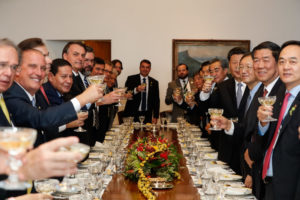Marcy Trent Long: Welcome to Mining the Deep, a podcast series by Sustainable Asia. My name is Marcy Trent Long.
In the previous episode, we learned about the untapped mineral riches of the deep-ocean floor. We also got an idea of the life forms and mineral formations that might be in danger if we decide to go mine those minerals. Deep seabed mining is still in the very early stages. For now, actual mining is not yet allowed in the high seas, the area of the ocean under the supervision of the United Nations. But…
David Santillo: Deep-sea mining is not just about the area beyond national jurisdiction. It’s not just about the deep seabed of the high seas. There are also a lot of interests in mining within the EEZs of Pacific island states and other areas around the world. And those are generally down to contracts between the mining companies and the national governments.
Marcy: That’s David Santillo, the Greenpeace scientist we met briefly in episode one. He mentioned the EEZ, or Exclusive Economic Zone. You’ll hear that term a lot throughout this series. It’s basically just the area of the sea up to 200 (nautical) miles out from the shore. Any country that has a coastline has an EEZ, and like David says, within that zone, a country can do pretty much whatever they want. So in 2011, Papua New Guinea decided it would give deep seabed mining a go.
EMTV news reader: On the 13th of January 2011, Nautilus Minerals was granted a mining licence for the development of the world’s first seabed mine.
Marcy: That’s from a news report by a local TV station in Papua New Guinea, or PNG. It talks about the PNG government making a deal with a company called Nautilus Minerals. In 2011, this Canadian company was granted a licence to start mining in the Bismarck Sea, a part of the Pacific ocean off PNG’s northern coast that’s surrounded by volcanic islands with old colonial names like New Ireland and East New Britain. Nautilus named the project Solwara 1.
Helen Rosenbaum: Solwara 1 is taken from the pidgin, which is the lingua franca for most of Papua New Guinea, for salt water.
Marcy: Dr Helen Rosenbaum is the campaign coordinator for the Deep Sea Mining Campaign, raising awareness about the consequences of deep-sea mining in the Pacific.
Helen: There were several meetings in the early stages of Nautilus’ activities in Papua New Guinea where they basically sold the project to the government.
Marcy: Nautilus first came to Papua New Guinea in 2008. They had figured out a way to mine the rich hydrothermal vents along the coast of the country, and the government of Papua New Guinea eagerly granted them a licence to go explore and assess the environmental impact.
Helen: There was a very excited “boy’s own adventure” reaction to Nautilus, who was really talking up the prospects for Papua New Guinea as being a world leader in seabed mining; being able to be part of the patenting of the technology that would revolutionise the way mining is conducted around the world.
Marcy: But when Nautilus came back with their environmental impact assessment, indigenous people along the coast were not too pleased with it. They claimed it ignored the cultural value of those fishing grounds and they sensed they needed an expert to take a good look at the document. So in 2009, they rang up Dr Richard Steiner, a professor in marine conservation at the University of Alaska, and they asked him to review the environmental impact statement, or EIS.
Richard Steiner: Actually, I just emailed you my review of the Solwara 1 EIS, which was done about 10 years ago for a local group of coastal peoples in PNG. There are so many unknowns, specifically on Solwara 1, on that particular vent field.
Marcy: Richard identified several issues that the scientists who did the impact assessment had overlooked. Take for example “dewatering”. When a mining machine on the seafloor grinds hydrothermal vents into gravel, the bits of rock and some water are then pumped up to a ship that’s waiting on the surface. There, the rock is filtered out of the water, and this process is called “dewatering”.
Richard: And then the dewatered effluent would be pumped back down to 50-100 metres above the seafloor and discharged. And that alone will cause a pollutant discharge in the deep sea that was not there prior to the project.
Marcy: Richard and other conservationists are worried that this effluent, once released in the deep ocean, will create large plumes of murky water. Those plumes could cover all life on the seafloor in a layer of mud.
Helen: Nautilus’ EIS also did not model what metals we might expect to be in those plumes that are going to be generated. There’s interconnectivity between the ecosystems of the deep sea and higher up the water column, those areas that we’re used to fishing from. Local communities on the islands in that area could suffer from heavy metal poisoning, and other marine life could as well.
Marcy: And those pipes that bring the mined minerals up to the surface, they could be really vulnerable to earthquakes.
Helen: Every year there are significant earthquakes in that area. Really right in that area where Nautilus proposes to mine the Solwara 1 mine. And none of this was factored into the environmental impact statement as risks.
Break to thank sponsors.
Marcy: There was something else about deep seabed mining that I couldn’t stop thinking about. What about all the noise that those machines make down there? Wouldn’t that impact the way fish and other species interact?
Stephen Simpson: Ten years ago, well 20 years ago really, when I started listening to the ocean, people, apart from the navy, hadn’t really engaged with the acoustic world underwater.
Marcy: Dr Stephen Simpson is a marine biologist at the University of Exeter. Stephen travels the world studying how marine species use sound to survive.
Stephen: So my interest in underwater sound really came about by accident, in the 1990s, just when I was an undergraduate student.
Marcy: At that time, scientists took a closer look at baby fish, who spend the first few weeks of their life as larvae drifting in the open ocean. They discovered that these tiny fish don’t just bob around in the ocean, but they know exactly where to look for a habitat that’s ideal for them to grow up in. So the question was, how do they do that? When a fish larva swims from the deep ocean where it’s born back to the shore, and it comes upon a coral reef, does it smell the coral reef as nice and lively? Does it look for other fish? Stephen had a hunch.
Stephen: In about the 1980s, 1990s, hydrophones became available – these are underwater microphones – they became available for biologists to start listening to the ocean. They started looking at certain fish species that use sound to communicate. And then we realised [in the] late 90s that actually the entire ecosystem had sound profiles. So we’ve spent the last 20 years characterising the acoustic properties of coral reef environments, listening in to the community of animals that make that sound.
Marcy: Knowing that a coral reef is a noisy affair, Stephen wanted to find out if this was what guided baby fish home. So he set up two traps in a quiet area of the sea. Both traps flashed a bright light, attracting nearby fish. But one of the traps Stephen mounted on a speaker, playing the sounds he recorded at a nearby reef. At the end of the experiment…
Stephen: To our amazement, we doubled the catches in the light traps by adding sound. Two thirds of those fish were in our noisy traps. So it was the first evidence that these tiny fish could hear, that they were attracted by sound and that really influenced where they were going to be swimming at night on their way back to a coral reef.
Marcy: Proof that these baby fish rely on sounds to find a reef that suits them. And it’s not just baby fish. There’s…
Stephen: …strumming noises from the lobsters or crunching noises from the urchins, and then the fish during the day use sound as a way of trying to impress each other, trying to defend their territories, trying to chase away a predator. And at night, when some of the nocturnal fish come out of the reef to go hunting, they then use sound as a way of keeping themselves together as a group or calling each other over when they find food.
Marcy: The Bismarck Sea is one of the most biologically diverse areas on earth, and the Papua New Guinea government has just announced that they’ll protect more than 7,000 square kilometres of the sea to support 2,000 species of fish that live there. But with the Solwara 1 area so close to this protected habitat, what will be the impact if big mining machines start causing a racket down there?
Stephen: It creates an acoustic fog over the area, which means that the animals really lose that space in which to be able to vocally communicate with each other and to be able to listen to their environment.
Marcy: But the Bismarck Sea is big, 40,000 square kilometres, more than 15,000 square miles. So if a machine is drilling way down deep, would that actually affect the fish at all?
Stephen: It’s likely to have boats up on the surface, which are either tethered or are at least controlling their operations down on the seabed. So instantly you’ve got a lot of shipping noise, and these boats often use thrusters to maintain their position in the water, which are particularly loud. So I would expect it to be thousands of miles that we can hear them, depending on the mining methods that are being used.
Marcy: Wow, sounds travel so far in the ocean that these mining sounds would definitely reach vulnerable communities of fish and other marine species, like the 130 species of shark and ray that live in the area. We’re actually already seeing the results on shark populations from the activities of companies like Nautilus in the deep waters around Papua New Guinea.
Helen: A very important culture in that area relies on shark calling. There was a famous movie that was made in the 1980s called The Shark Callers of Kontu that shows this really unusual and important cultural connection to the ocean through calling up the sharks.
Marcy: The indigenous people take to the sea in a small canoe. They dip a bundle of shells in the water and start shaking it. Soon enough, a shark comes up to the surface. The hunter ensnares the shark and drags it into his tiny canoe. When the shark is caught, the meat is shared with the whole community…
Helen: …which has the outcome of social connectivity as well as connecting to the ocean environment. So local communities have been reporting for quite some time that Nautilus’ exploration activities mean they can’t any longer call up sharks. So I think that tells us that sharks have just moved off, there are not sharks in the numbers there used to be in that area. And tourism operators have reported similar things in terms of dolphin numbers as well.
Marcy: Declining numbers of wildlife in the area, serious concerns about how the delicate mining systems would hold up during tropical storms or earthquakes, issues with the discharge sludge that might cover entire ecosystems in mud… This is what Richard Steiner, the Alaska University professor, found when he was asked by local groups to study the environmental impact of the Solwara 1 project. Armed with this knowledge, local citizens tried to halt the licensing of the project, but at a 2011 meeting, the Papua New Guinea government was persuaded by the prospect of new mining revenue.
Helen: For a struggling economy like Papua New Guinea. That’s quite an appealing scenario, and caution was thrown to the wind. So although there were some saner more cautious voices raised at this meeting, the majority of people there and the leading decision makers decided to go with the Solwara 1 project and to give it [their] blessing.
Marcy: When the government granted Nautilus a licence to start digging, immediately, concerned citizens organised a grassroots campaign. Nautilus would need a few years to bring the funding and equipment together to start mining, so there was still time to stop the project.
EMTV report
New Ireland province spokesperson: I, as the voice of the communities in New Ireland province, request that this project be put to a stop as we do not really know what we are getting ourselves into.
Gary Juffa, Northern province governor: We want to participate in the economic development of this country. We are not chasing away investors. We want genuine investors. But investors must come and respect us. Respect our laws. Respect our interests. And they must discuss with us.
Marcy: That was audio from a 2012 meeting between stakeholders and concerned citizens. They had just collected 24,000 signatures opposing the project. One of the grassroots organisations that stood up against Nautilus is the Alliance of Solwara Warriors. Listen to Solwara Warrior Patrick Kaupun as he explains what the ocean means to people there.
Patrick Kaupun: The Alliance of Solwara Warriors now stands together to push for the ban on seabed mining. The sea is everything. And by everything, I mean that it is our life. The sea connects with the land and the sky, and even with the bushes and the rivers. All are one in one life and are worth so much more than development. I think this should be a gift to the future generation, not development, but the life that we have with the sea. We stand up today to make sure our fight is for the betterment of our future generations.
Marcy: After Nautilus received the mining licence from Papua New Guinea, they ordered a support ship to be built in China. Everything was to be ready for mining to start in 2018. But then things went from bad to worse for the company. They started a long legal battle with the PNG government about payment of shares, which delayed the whole venture. Then, a key corporate investor pulled out. Finally, in late 2017, they couldn’t pay for the ship that was waiting for them in a dock in China. The Chinese shipbuilder eventually sold the vessel to an Indian mining company, and Nautilus, teetering on bankruptcy, entered administration. But for the people of Papua New Guinea, this was not a victory.
Helen: The PNG government was bullied pretty much into buying a share of the Solwara 1 project.
Marcy: The government of Papua New Guinea has a 15% share.
Helen: That purchase is now equivalent to something like one third of Papua New Guinea’s health budget for its population of nine million people.
Richard: They come into many of these developing island nations, and promise the world. They always overstate the potential benefit of these projects and understate the potential risk and impacts.
Marcy: The whole Nautilus business left a deep scar in Papua New Guinea and has alerted other Pacific nations to the risks of deep seabed mining. Here’s Matthew Gianni of the Deep Sea Conservation Coalition.
Matthew Gianni: Papua New Guinea recently joined Fiji and Vanuatu in calling for at least a 10-year moratorium on seabed mining within their areas of national jurisdiction. In other words, within their EEZs.
Marcy: But mining companies largely seem to agree that mining within the national borders of developing nations is not the best idea.
Gerard Barron: Developing nations are challenging, you know. They’re trying to sort out so many things at once.
Marcy: That’s Gerard Barron. He was actually one of the early investors in Nautilus, but he collected on his investment early on and left to start a new company: DeepGreen. With DeepGreen, Gerard is looking away from the national waters and out into the high seas, where the United Nations’ International Seabed Authority is the only one watching over your shoulder.
Gerard: I think that the International Seabed Authority, who govern the high seas, are a far more stable and far more reliable landlord.
Marcy: With Gerard at its helm, DeepGreen is currently exploring the ocean floor between Hawaii and Mexico. They’re looking for these nodules, little clumps of metal scattered over large areas of the seabed. To get these nodules, you don’t need to smash up hydrothermal vents and you’re not impacting coastal communities. But does that mean it’s totally harmless? That’s what we’ll find out in the next episode of Mining the Deep.
Mining the Deep is hosted by me, Marcy Trent Long, and produced by Samuel Colombie in collaboration with China Dialogue. The series is mixed by Chris Wood.
Thanks to all our guests for helping us unravel this complicated issue, to Miguel Urmeneta for his voice-over, and Alex Mauboussin for his intro music, made from repurposed and recovered waste items. Additional thanks to the podcast After the Fact by Pew Charitable Trusts for providing audio from a speech by Michael Lodge. Thank you to the entire Sustainable Asia team, Bonnie and Heidi Au, Josie Chan, Crystal Wu and Jill Baxter.
Production credits:
Executive producer and host: Marcy Trent Long
Producer: Samuel Colombie
Sound engineer: Chris Wood
Intro/outro music: Alex Mauboussin

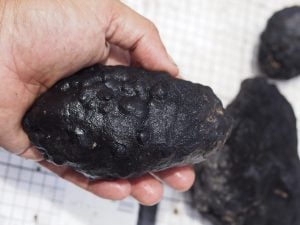

![Chief Minister Hafiz Hafeezur Rehman of Gilgit-Baltistan talks to reporters [image by: Peer Muhammad]](https://dialogue.earth/content/uploads/2019/11/IMG_20191120_174847-1-300x295.jpg)
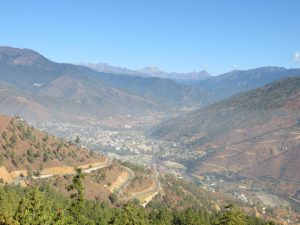
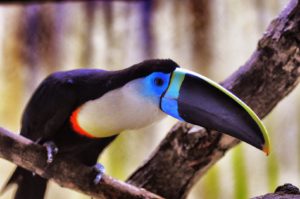
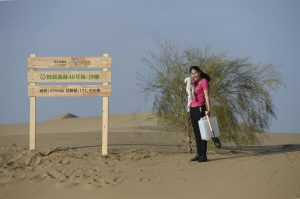
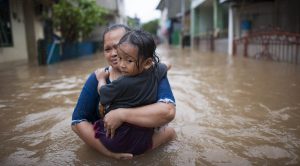
![Emaan Danish Khan is now a familiar face at climate talks in Pakistan, the youngest climate activist in the country [image by: Zofeen T. Ebrahim]](https://dialogue.earth/content/uploads/2019/11/IMG_2711-1-300x255.jpg)

